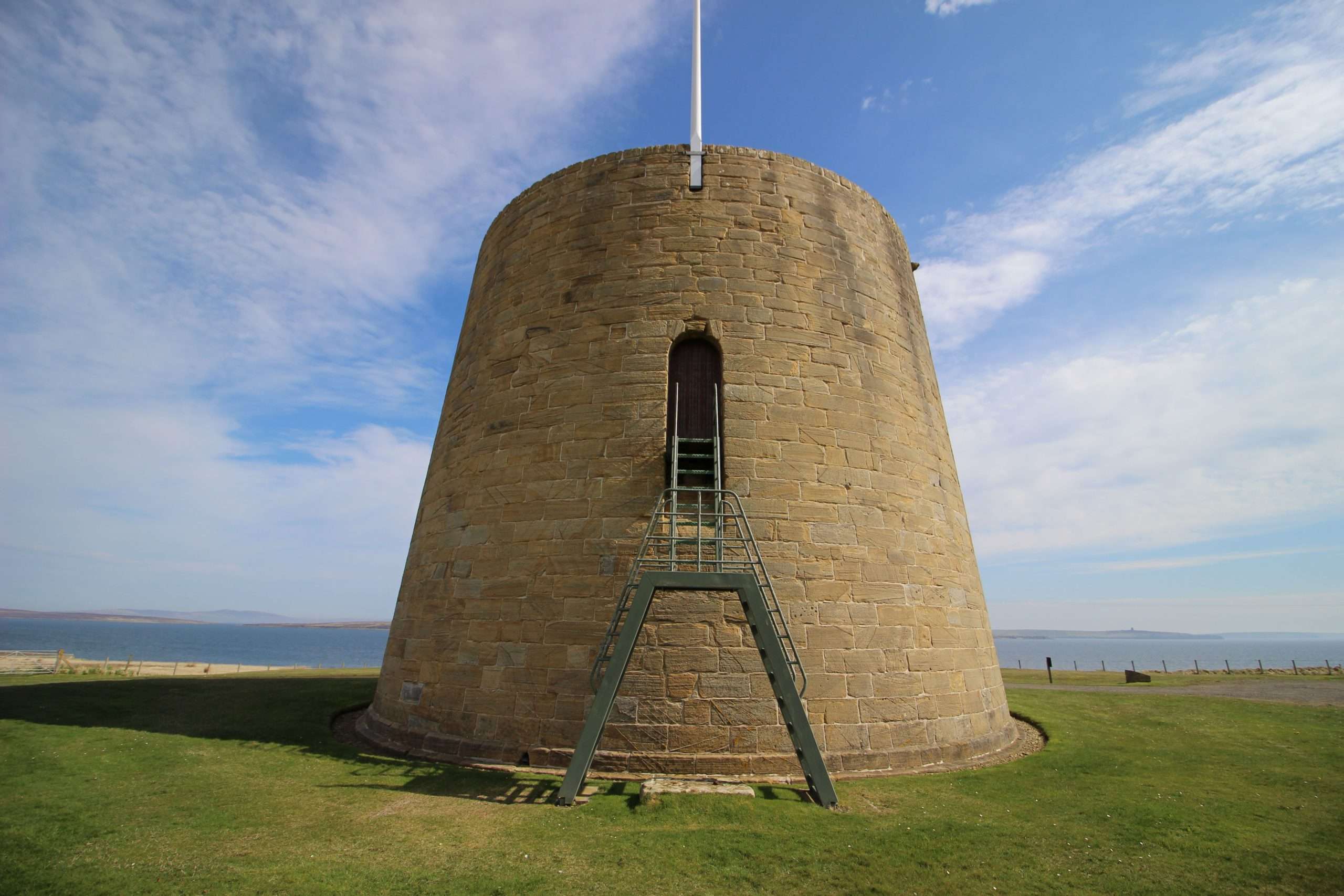At the peak of the Napoleonic Wars when American, French, Danish and Norwegian privateers would go north round Orkney or through the Pentland Firth to harass Scandinavian and British merchant shipping, Longhope Sound in Scapa Flow in the Orkneys offered refuge from the attacks. The merchant ships would rendezvous in Longhope Sound, organise into convoys, and with Royal Navy protection ply the Baltic trade routes.
To defend the anchorage, a battery and Martello tower were constructed at Hackness on the island of South Walls in 1813-14. A sister tower was also built at this time, across the water to the north at Crockness on the island of Hoy. In tradition, the marauding and pillaging of Scottish-American naval captain John Paul Jones have been associated with instigating the construction of the defences. The Hackness tower, situated about 200m from the battery, has three floors. The ground floor housed the water cistern, powder magazine and supply stores. On the first floor, which was accessed by a removable wooden ladder, were quarters for 14 soldiers and an NCO. A 24-pounder gun was mounted on the top floor.
24-pounder cannons
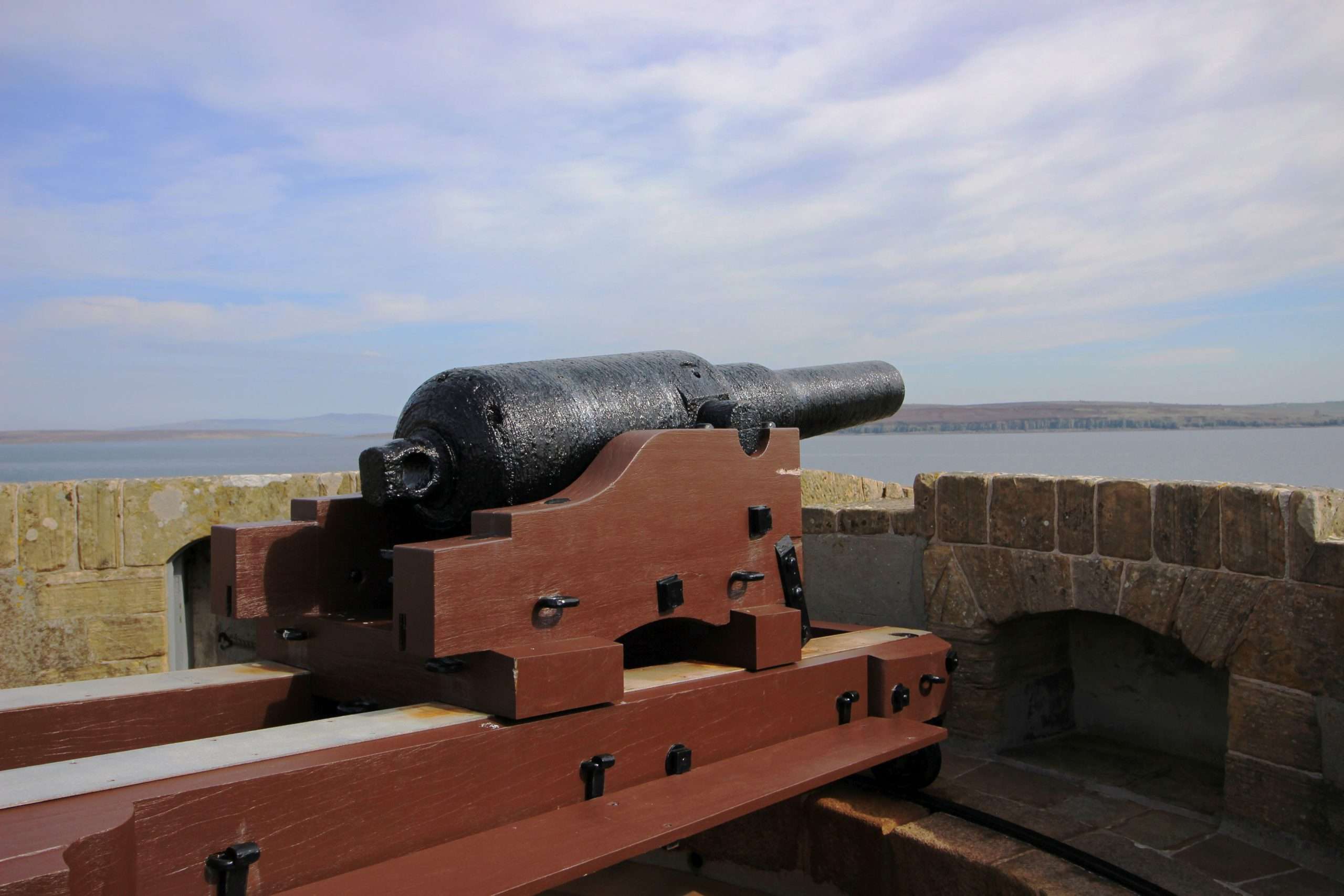
On 14 August 1814 Sir Walter Scott paid a visit to the Hackness battery and tower, then still under construction. Scott reported on this episode, and expressed his scepticism about the military effectiveness of the towers in his account, Northern Lights, or a Voyage in the Lighthouse Yacht to Nova Zembla and the Lord knows where in the Summer of 1814: ‘At a little distance from this battery they are building a Martello tower, which is to cross the fire of the battery, and also that of another projected tower upon the opposite point of the bay.
The expedience of these towers seems excessively problematical. [ . . . ] In the case of Long-Hope, for instance, a frigate might disembark 100 men, take the fort in the rear – where it is undefended even by a pallisade – destroy the magazines, spike and dismount the cannon, carry off or cut out any vessels in the roadstead, and accomplish all the purposes that could bring them to so remote a spot, in spite of a serjeant’s party in the Martello tower, and without troubling themselves about them at all.’
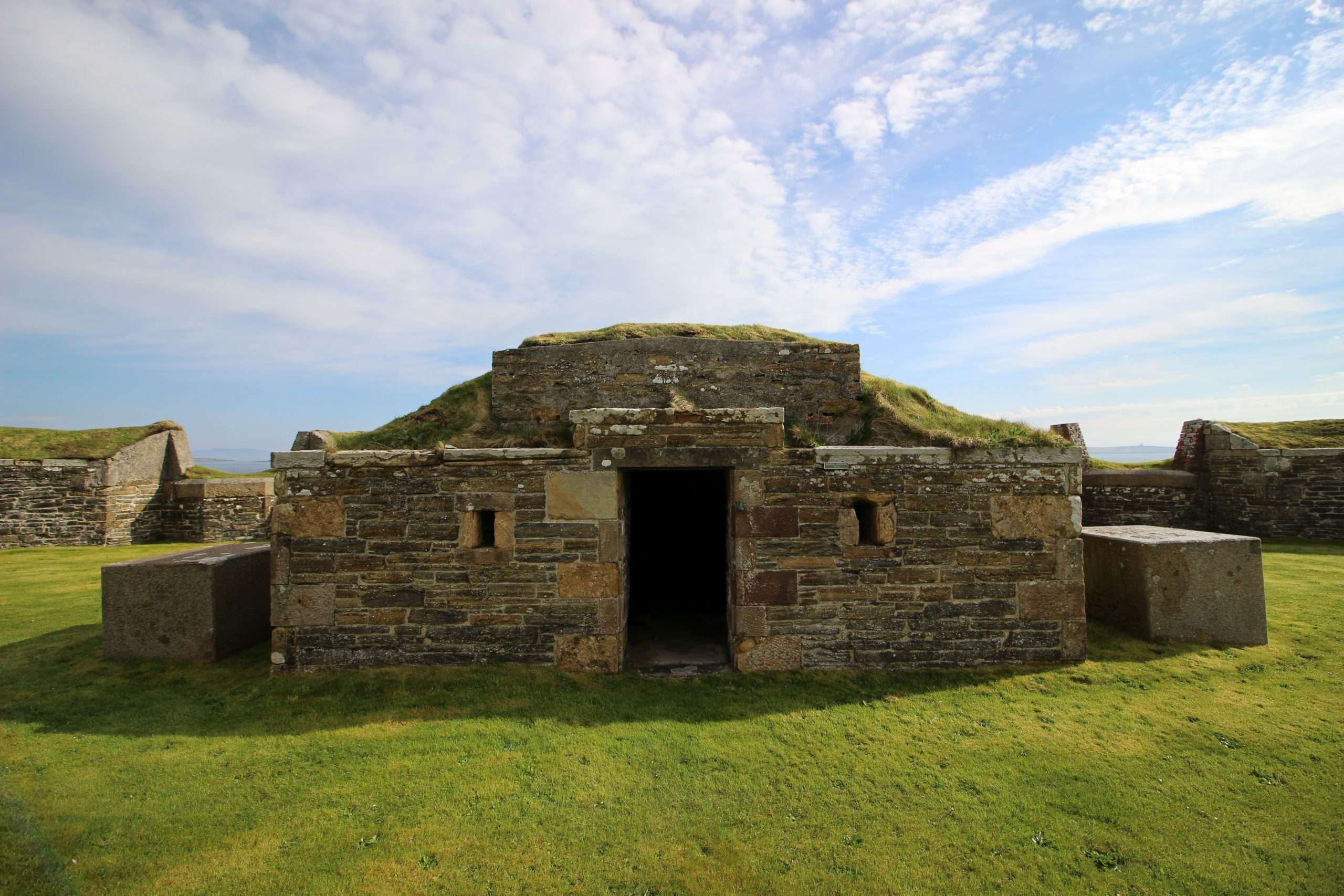
The Hackness battery was armed with eight 24-pounder cannons. These were mounted in a V configuration on traversing carriages, putting the entire Longhope Sound in their firing line. A sloped parapet assisted in aiming and firing the guns. The battery also held a powder magazine, supply store and soldier’s barracks. Despite the construction and careful preparation, none of the defences apparently saw enemy action by the end of hostilities in 1815. The Hackness Battery is one of the few from the period, and is the best preserved example. For decades, when the battery was rarely occupied by military staff, locals used the battery as a croft and held dances and gatherings in the barracks.
No armed conflict ensued
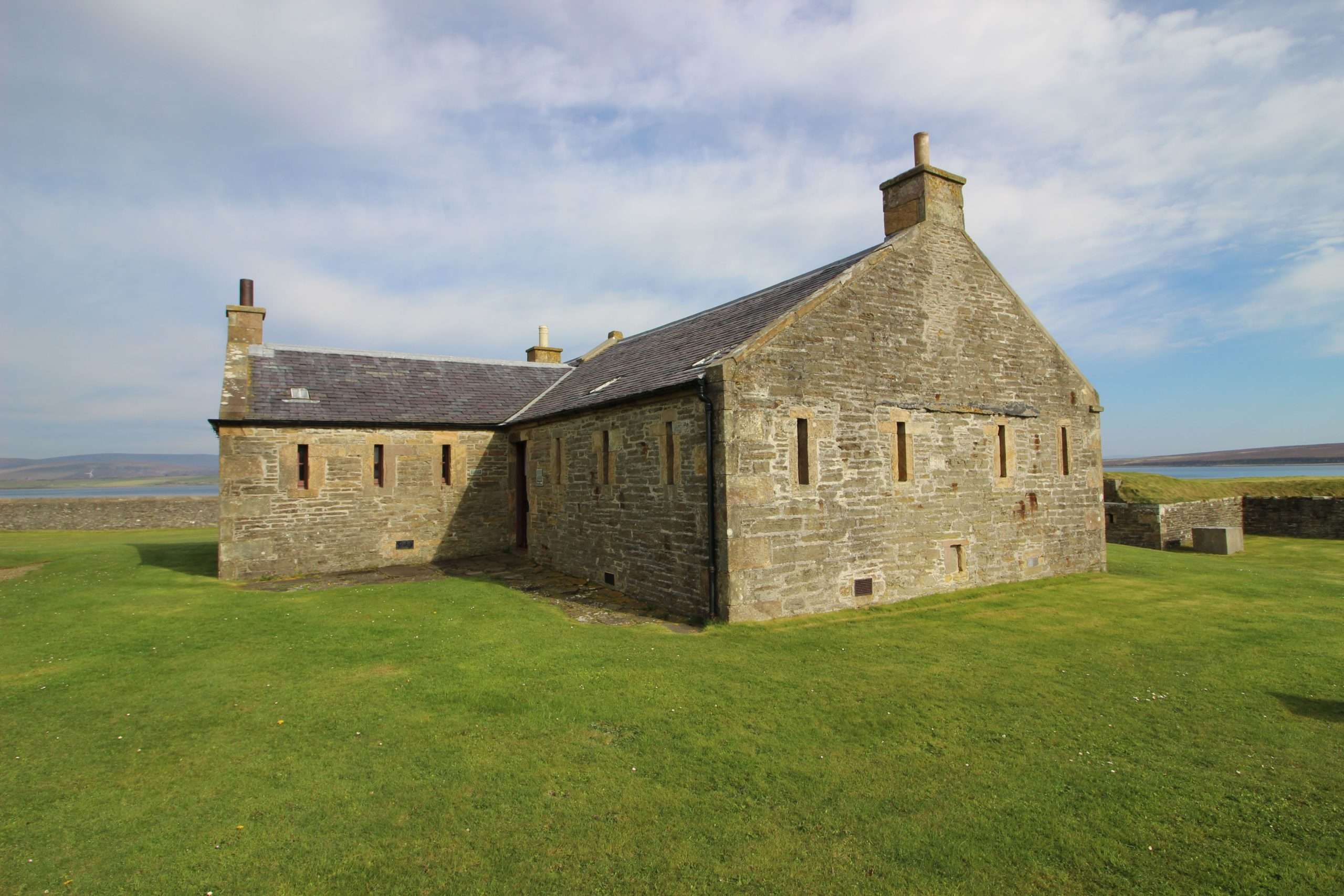
In 1866 in reaction to the possible threat posed by the American Fenian Brotherhood, the battery and armament were upgraded. Five 68-pounder cannon replaced the 24-pounders at the battery and tower. The four at the battery were positioned to fire through wall embrasures. The barracks were rearranged so that the master gunner and NCOs had separate quarters. Other changes included the addition of a cookhouse, guard house and latrine blocks. But again no armed conflict ensued, and as of 1883 only two soldiers manned the Hackness defences. Perhaps the only time the cannon were fired was on a day in 1892 when the Orkney Volunteer Artillery held drills and target practice. Even during the two world wars the Hackness and Cockness defences were quiet. Circa 1900 the Hackness Tower gun was removed. On display now at the tower is a 64-pound cannon contemporary with the 1866 weapon.
Now in the care of Historic Environment Scotland, Hackness Martello Tower and Battery is open to visitors Monday to Thursday from 1 April to 30 September. Exploration of the site is by guided tours only; these are scheduled at 10:15am, 12 noon and 2:30pm. It’s recommended to book tickets well in advance, which can be done through the Historic Environment Scotland website. Crockness Martello Tower is situated north of the hamlet of Crockness and Crock Ness Point. A twin of the Hackness tower, the Crockness tower is not open to the public.
Hackness Martello Tower and Battery is open April 1st to September 30th. For more details see: www.historicenvironment.scot.
Did you know?
Martello Towers
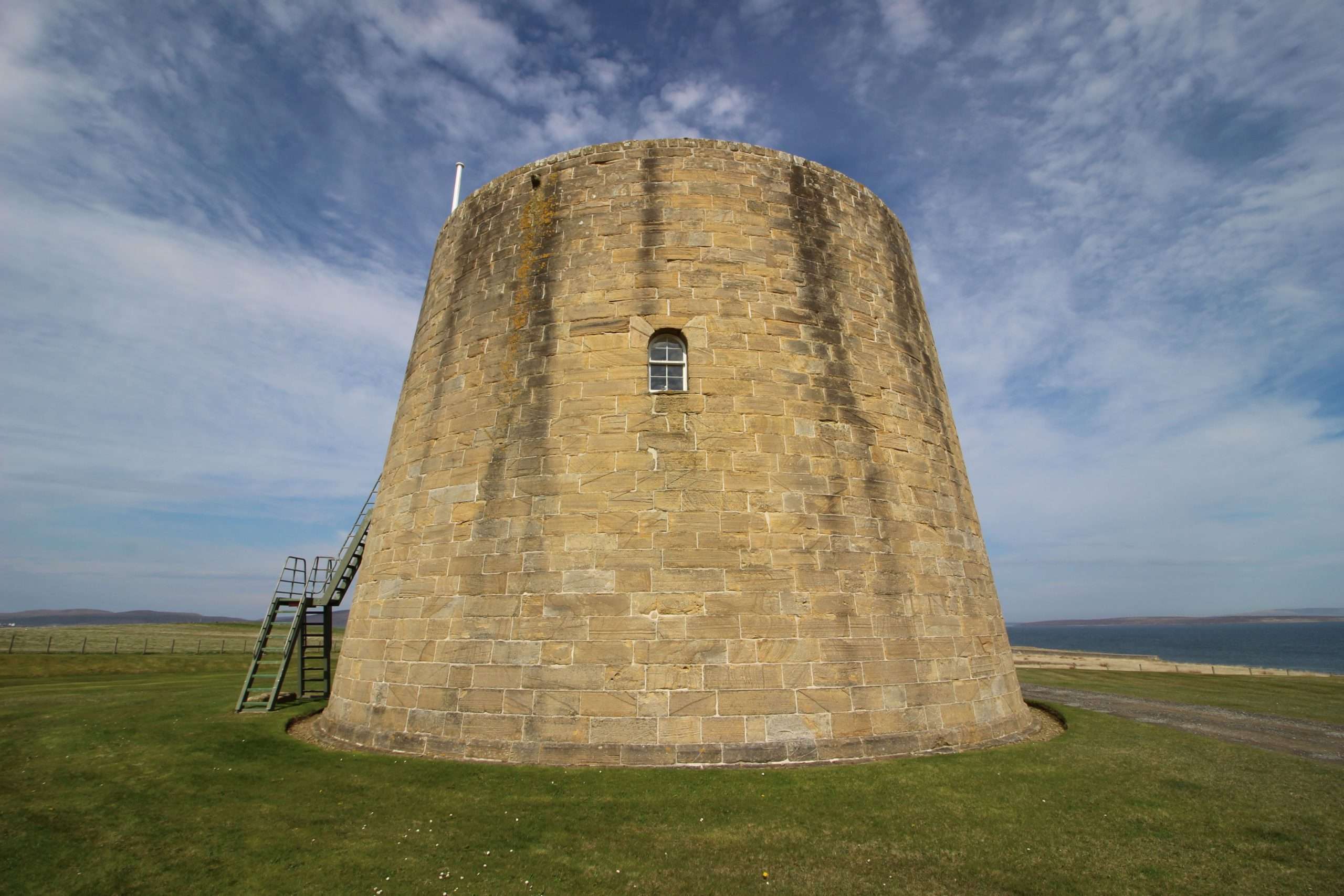
In 1794 the French military mounted two small cannon on a stone round tower at Mortella Point, Corsica. The pair of cannon repelled an attack of two British warships, which combined carried 106 guns in firepower. The effectiveness of the Corsican tower led the British to build more than 100 Martello towers along the south coast of England in response to Napoleon’s 1803 threat to invade. The only Martello towers built in Scotland are those at Hackness and Crockness, and one standing sentry at the port of Leith, Edinburgh.
The Leith Martello Tower – locally called Tally Toor – was built in 1809 to protect Leith Harbour, the docks and the City of Edinburgh. The tower was constructed on Mussel Cape Rocks at a cost of £17,000. As with the Hackness and Crockness defences, the Leith tower didn’t see any military action. The Royal Engineers renovated the tower in 1850, and Lieutenant-Colonel Yule added a trefoil gun emplacement. Leith artillerymen were stationed at the tower until 1869. The tower is now partially buried due to land reclamation in the harbour, and sits on the Leith Docks’ eastern breakwater.
Sout Walls and Hoy
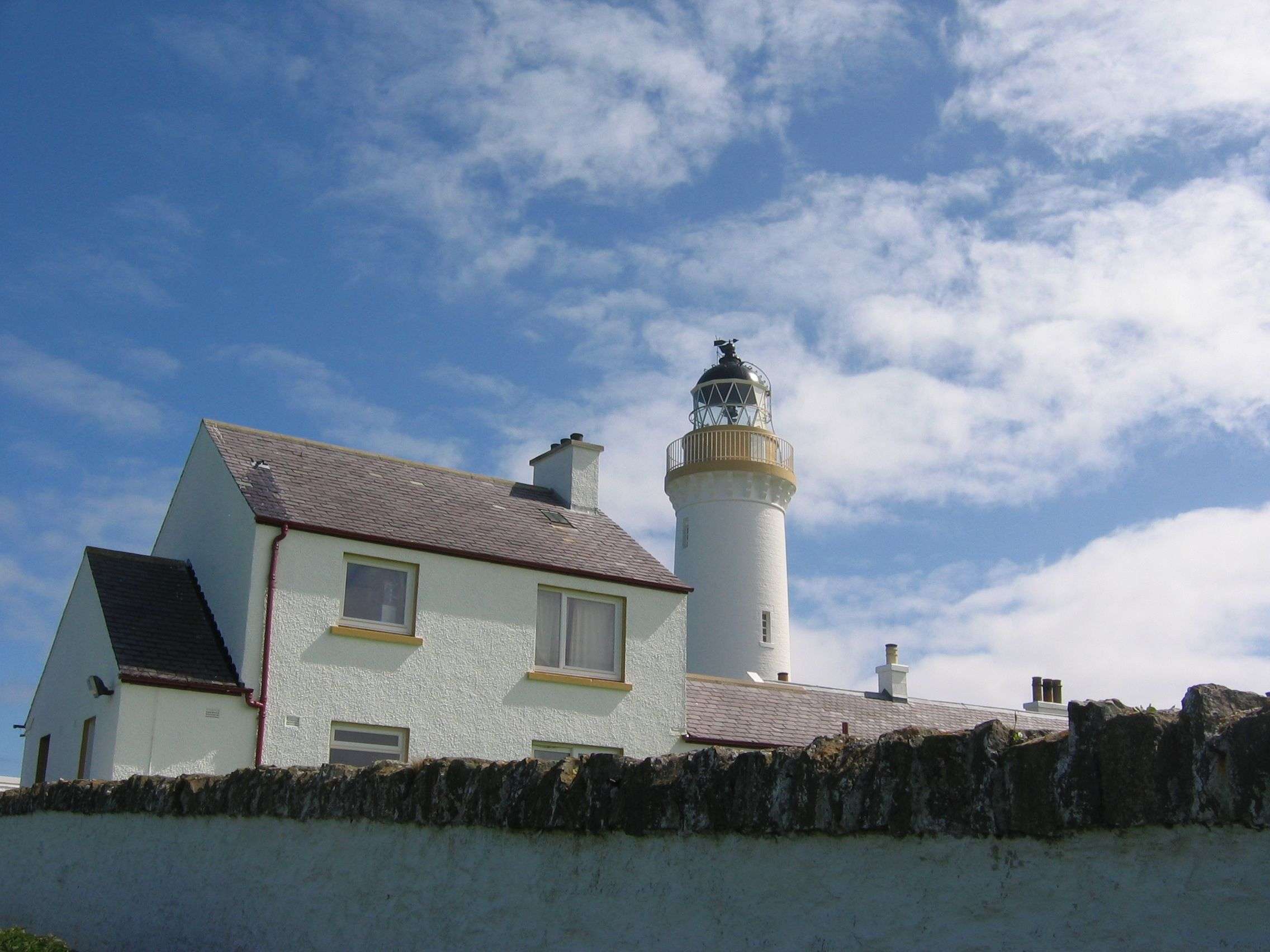
With an area of 1100 hectares, South Walls was formerly a tidal island but was joined to Hoy by a narrow causeway constructed in 1912. South Walls forms the southern border of the Longhope anchorage. At Cantick Head, at the end of a long peninsula on the south-eastern coast of the island is the Cantick Head Lighthouse. David and Thomas Stevenson oversaw construction of the lighthouse which began in 1856. The lighthouse went into service in 1858, and wasn’t converted to automatic operation until 1991.
Hoy, with an area of 143 square kilometres, is the second largest island in the Orkney archipelago. The island has some of the tallest seacoasts in all of Britain, with those at St John’s Head reaching 350m. The most mountainous of the Orkney Islands, Hoy’s highest point – and the highest in the archipelago – is Ward Hill which summits at 481m. Hoy also has some of the most northerly woodlands in the British Isles.
Text by: Eric Bryan.
Main photo: Hackness Martello Tower entrance. Photo: Beep boop beep (CC BY-SA 4.0).

